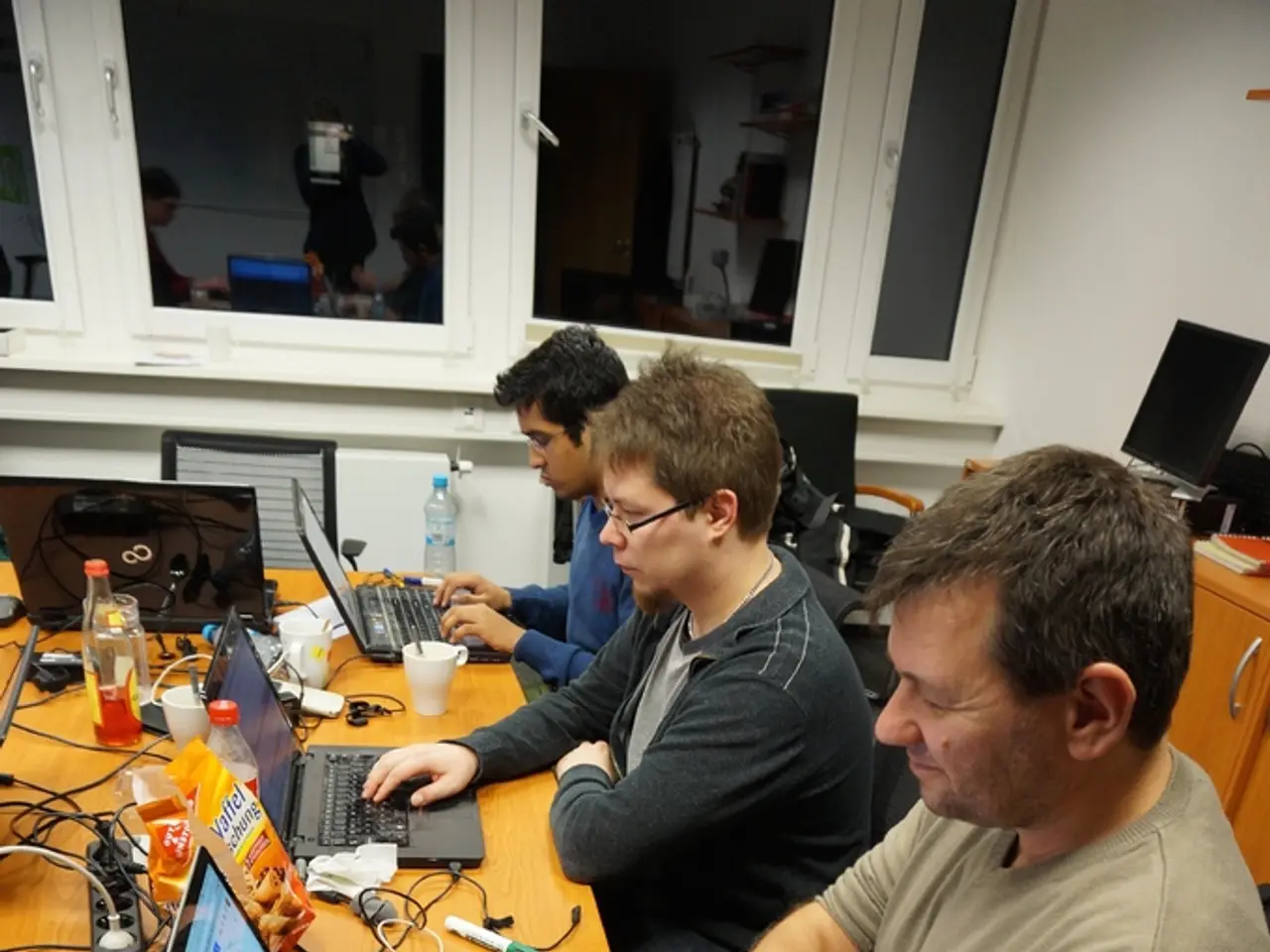South Korea's Demographic Struggle
South Korea is grappling with a critical demographic challenge, as its ultra-low birthrate continues to threaten its economic future. In April 2025, the birthrate stood at 0.79, while in 2024 it was 0.75 – among the lowest fertility rates globally and well below the replacement level of 2.1 children per woman [1][2][5].
To address this issue, the South Korean government has earmarked 88.5 trillion won ($64.8 billion) to tackle both the low birthrate and the aging population problems [1]. The funds will be used for a variety of initiatives, including direct cash handouts to parents and babies, enhanced support for local governments, and the implementation of comprehensive pro-family policies.
The government's approach goes beyond traditional cash incentives, focusing on improving childcare availability and quality, reforming work-life balance, and providing housing benefits and education support to reduce the costs of raising children [3]. These strategies seem to be bearing fruit, as South Korea saw its first fertility rate increase in nearly a decade in 2024, up to 0.75 from a historic low of 0.72 in 2023 [3][5].
However, economic reforms are also crucial to address the demographic challenges. Enhancing labour rights and protections, especially for small and medium enterprises, and strengthening global competitiveness to sustain economic growth despite a shrinking labour force are key elements of the government's strategy [2].
Projected economic growth is modest, with a 0.8% growth rate in 2025 and 1.6% in 2026, making such reforms critical to sustaining welfare programs and supporting families [2]. South Korea officially became a super-aging society in 2024, and increasing social welfare spending—from 15.4% of GDP in 2024 to a projected 26.9% in 2065—necessitates economic strategies that maintain fiscal balance while supporting elderly care and intergenerational equity [2].
The consequences of South Korea's low birthrate are far-reaching, including shrinking schools, rapid aging of the population, and pressure on social welfare systems. Fostering a social environment where family life is genuinely supported rather than merely incentivized might help alleviate some of the pressures currently discouraging young couples [4].
South Korea's demographic crisis is not just a national issue but a reflection of broader global trends in advanced economies. Countries such as Germany and Denmark have moderately increased fertility rates by transforming social norms, promoting gender equality, and offering subsidized child care, generous paternity leave, and flexible work schedules [6].
Young South Koreans are increasingly delaying marriage or choosing not to marry at all. Some countries with similar birth rate struggles, such as Sweden and France, have maintained comparatively higher fertility rates due to family-friendly work policies, generous parental leave, and accessible childcare [6].
High living costs, particularly housing prices and education costs, are major deterrents for starting families in South Korea. South Korea could study these models and tailor similar programs to suit its own cultural context to encourage more parenthood [7].
The social implications of South Korea's low birthrate include questions about the long-term sustainability of South Korea's cultural identity and the possibility of Koreans becoming a minority in their own country within a few generations [8]. The road to addressing South Korea's demographic crisis will be long, but the alternative—a slow and silent disappearance—is far more unsettling [9].
References:
[1] Kim, J. (2025). South Korea's 88.5 trillion won plan to boost birthrate and tackle aging population. Yonhap News Agency. [2] Lee, S. (2024). South Korea's Economic Outlook: Challenges and Opportunities. Bank of Korea. [3] Park, J. (2024). South Korea's birth rate rises for the first time in a decade. The Korea Times. [4] Kim, H. (2023). South Korea's Demographic Crisis: Causes, Consequences, and Solutions. The Asan Institute for Policy Studies. [5] Organisation for Economic Co-operation and Development (OECD). (2023). Fertility Rates by Country. OECD Data. [6] European Commission. (2022). Demographic Change in the EU: Challenges and Opportunities. European Commission. [7] World Bank. (2021). South Korea: Demographic and Social Statistics. World Bank Data. [8] Chung, J. (2020). South Korea's Low Birthrate: Causes, Impact, and Solutions. The Diplomat. [9] Lee, J. (2019). South Korea's Demographic Crisis: A Slow and Silent Disappearance. The Korea Herald.
- The South Korean government's comprehensive pro-family policies, which focus on improving healthcare, childcare, and work-life balance, are aiming to spotlight mental health and wellness as part of their strategies to encourage childbirth.
- As South Korea embraces the need for cultural change to combat its demographic crisis, it can learn from other countries, such as Denmark and Sweden, that have enhanced their culture by promoting gender equality, offering family-friendly work policies, and increasing access to affordable childcare.
- To ensure the long-term sustainability of its identity, South Korea will need to examine factors impacting mental health and wellness, such as high living costs, and implement science-based solutions that consider economic growth and social welfare while fostering a nurturing culture for families.




